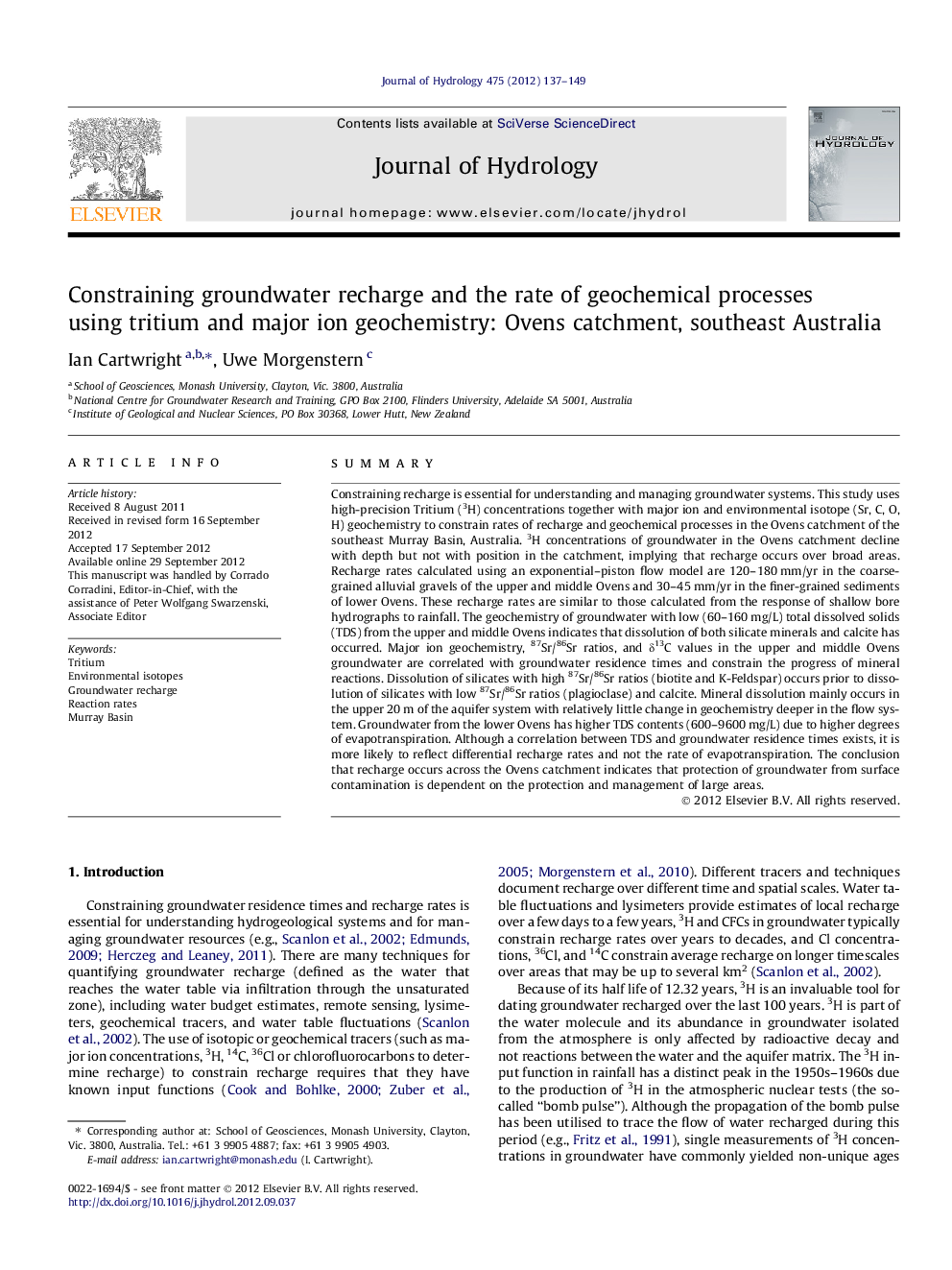| کد مقاله | کد نشریه | سال انتشار | مقاله انگلیسی | نسخه تمام متن |
|---|---|---|---|---|
| 4576651 | 1629973 | 2012 | 13 صفحه PDF | دانلود رایگان |

SummaryConstraining recharge is essential for understanding and managing groundwater systems. This study uses high-precision Tritium (3H) concentrations together with major ion and environmental isotope (Sr, C, O, H) geochemistry to constrain rates of recharge and geochemical processes in the Ovens catchment of the southeast Murray Basin, Australia. 3H concentrations of groundwater in the Ovens catchment decline with depth but not with position in the catchment, implying that recharge occurs over broad areas. Recharge rates calculated using an exponential–piston flow model are 120–180 mm/yr in the coarse-grained alluvial gravels of the upper and middle Ovens and 30–45 mm/yr in the finer-grained sediments of lower Ovens. These recharge rates are similar to those calculated from the response of shallow bore hydrographs to rainfall. The geochemistry of groundwater with low (60–160 mg/L) total dissolved solids (TDS) from the upper and middle Ovens indicates that dissolution of both silicate minerals and calcite has occurred. Major ion geochemistry, 87Sr/86Sr ratios, and δ13C values in the upper and middle Ovens groundwater are correlated with groundwater residence times and constrain the progress of mineral reactions. Dissolution of silicates with high 87Sr/86Sr ratios (biotite and K-Feldspar) occurs prior to dissolution of silicates with low 87Sr/86Sr ratios (plagioclase) and calcite. Mineral dissolution mainly occurs in the upper 20 m of the aquifer system with relatively little change in geochemistry deeper in the flow system. Groundwater from the lower Ovens has higher TDS contents (600–9600 mg/L) due to higher degrees of evapotranspiration. Although a correlation between TDS and groundwater residence times exists, it is more likely to reflect differential recharge rates and not the rate of evapotranspiration. The conclusion that recharge occurs across the Ovens catchment indicates that protection of groundwater from surface contamination is dependent on the protection and management of large areas.
► Recharge rates in Ovens catchment constrained using high-precision 3H dating.
► Recharge estimates accord with those from hydrograph records.
► Geochemistry and Sr and C isotopes reflect water–rock interaction during recharge.
► Groundwater protection requires managing large areas of the catchment.
Journal: Journal of Hydrology - Volume 475, 19 December 2012, Pages 137–149